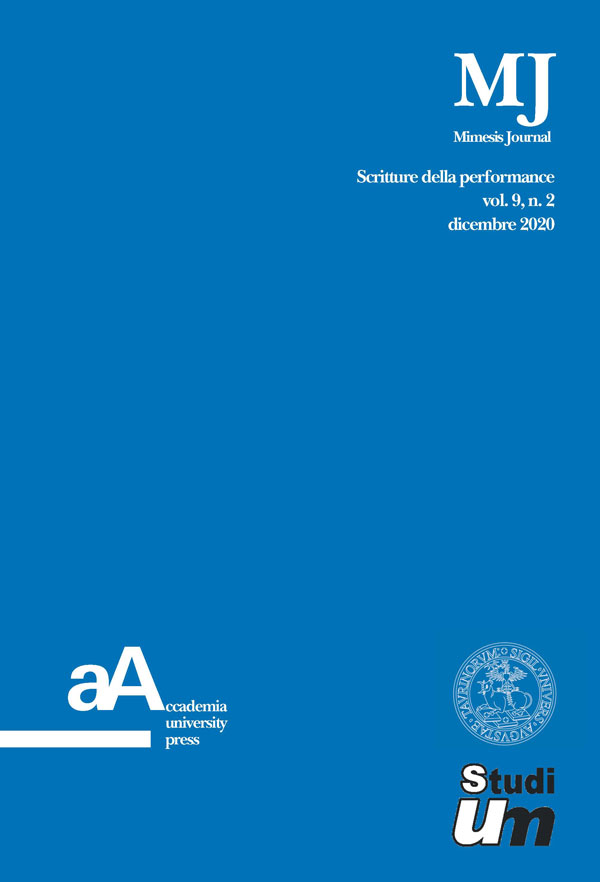Il tango patrimonio culturale immateriale
Intervista a Pablo Moyano e Roberta Beccarini
DOI:
https://doi.org/10.4000/mimesis.2157Parole chiave:
tango, intangible cultural heritage, UNESCO, interview, living archiveAbstract
The Argentine tango, UNESCO Intangible Cultural Heritage of humanity since 2009, is undergoing an interesting evolution and diffusion process, which makes its protection even more delicate. In this case, it is very important to listen to the voice of the “living archive”, i.e. the dancers who have a relationship with the Master and a historical memory of tango. This is the reason why here we have the interview of Pablo Moyano and Roberta Beccarini, disciples of Miguel Angel Zotto. They are the bridge between the glorious past and the new that is coming. For each of them it is fundamental to feel the others and express themselves through their experiences and then transform it in something new. For this reason it is important to preserve the tango and know its history: without roots cannot have an evolution.


